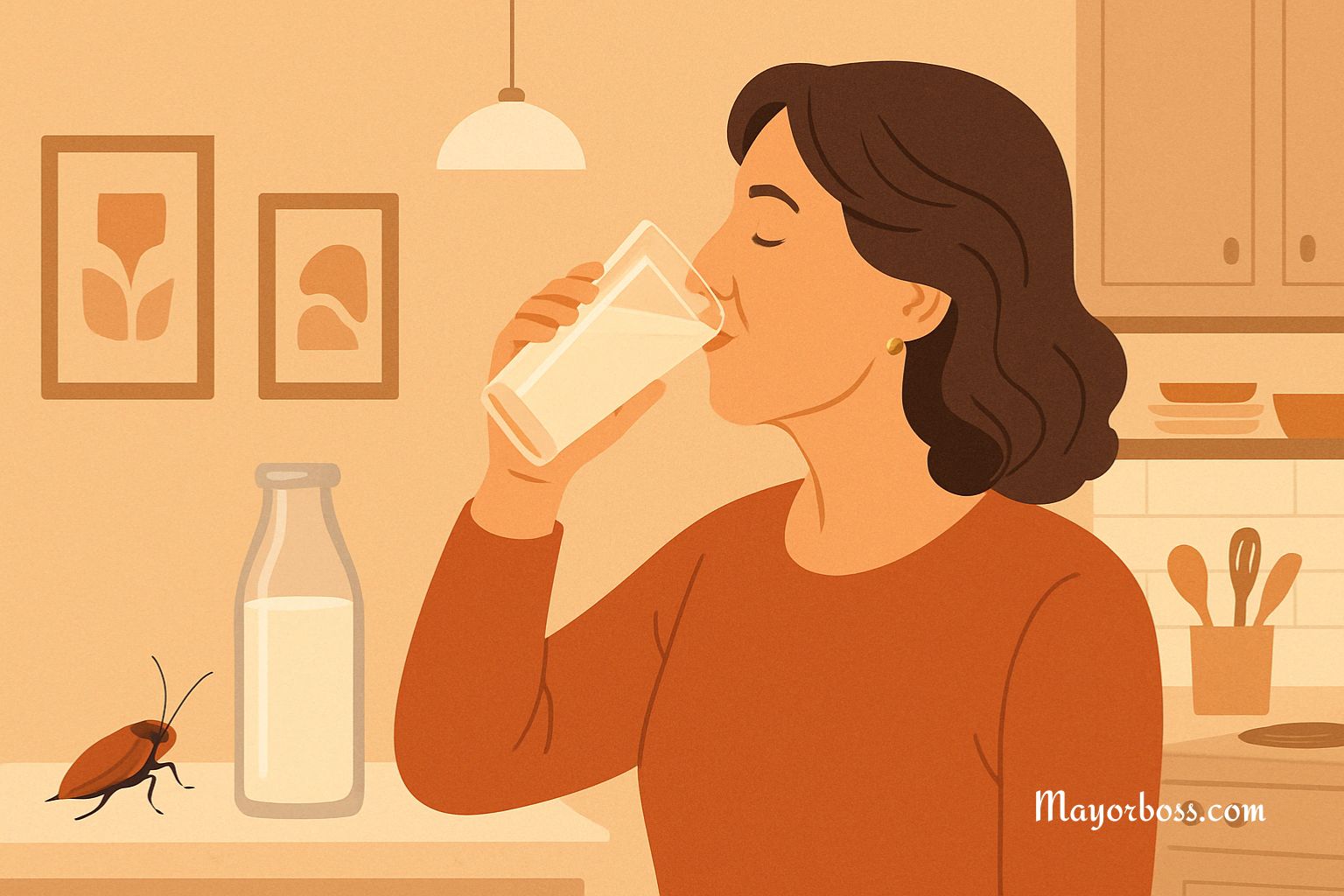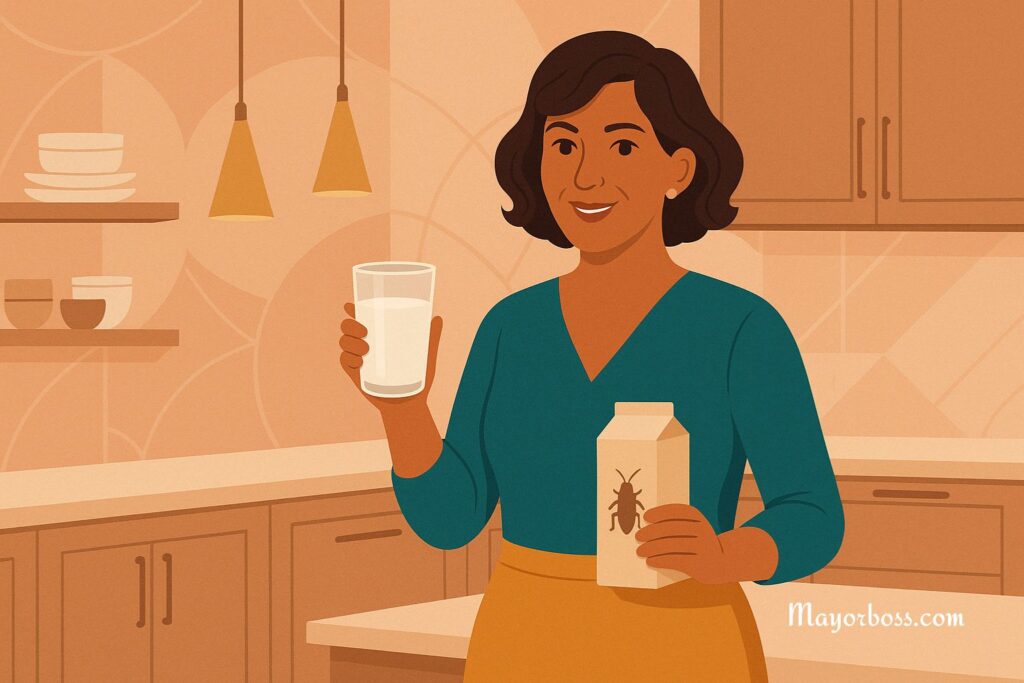Is Cockroach Milk the Next Superfood? What You Should Know
What Is Cockroach Milk?
When scientists studied the Pacific beetle cockroach (Diploptera punctata), they discovered something unusual. Instead of laying eggs, this species carries its young inside a brood pouch and nourishes them with a pale, crystal‑rich secretion—often nicknamed “cockroach milk.” The crystals form inside the digestive tract of the developing nymphs and dissolve slowly, delivering steady nutrition. Researchers first isolated these crystals in 2016, sparking global headlines about an insect‑derived “dairy” alternative. 1

How Is It Collected?
At the moment, there is no farm that actually “milks” cockroaches. Scientists harvest the secretion in tiny quantities under laboratory conditions. Each insect produces microscopic droplets, so scaling up would demand millions of insects, intricate equipment, and rigorous quality‑control protocols. While biotech groups are exploring cell‑culture methods that bypass live insects, commercial production remains theoretical.
Nutritional Fact
Early analyses suggest the crystals are remarkably dense in nutrients. Gram for gram, they contain:
- Protein: about 45 percent, supplying all nine essential amino acids.
- Fat: roughly 16–22 percent, including omega‑3 and omega‑6 fatty acids.
- Carbohydrate: around 25 percent, providing a slow, sustained energy release.
One study calculated that a single crystal packs more than triple the calories of an equal amount of cow or buffalo milk. 23
Possible Health Benefits
Because the protein is complete and the fats are balanced, the crystals could, in theory, support muscle repair, cell growth, and brain development. The steady dissolution profile may help stabilize blood sugar between meals. However, these projections come from laboratory chemistry, not human trials. No data confirm that people can digest the crystals efficiently, absorb the nutrients, or tolerate them without side effects.
Environmental Promise
Insects need far less feed, water, and land than dairy cattle. They also emit fewer greenhouse gases. If researchers succeed in producing cockroach crystal protein in bioreactors, the resource footprint could be much smaller than that of traditional milk or even some plant‑based beverages. Such a system might offer a sustainable protein option for a growing population. 4
Safety and Allergy Questions
To date, regulatory agencies such as the U.S. Food and Drug Administration have not approved cockroach milk for human consumption. Allergic reactions to shellfish and dust mites arise from similar proteins, raising concern that cockroach derivatives could trigger comparable responses. Moreover, insects can harbor pathogens if reared in unsanitary settings. Until rigorous toxicology, allergenicity, and microbiological studies are completed, experts advise caution. 5
More Research
Teams worldwide are experimenting with gene sequencing, protein‑expression systems, and fermentation platforms to replicate the crystal structure without insects. If successful, a yeast or microalgae factory might someday churn out the same nutrient profile in stainless‑steel tanks. Those advances, however, will need peer‑reviewed validation, transparent funding, and open safety data before products reach grocery shelves.
Should You Try It Now?

For the average shopper, cockroach milk remains a scientific curiosity rather than an item on the nutrition label. No reputable retailer sells it, and no medical organization recommends it. If you already meet your protein and micronutrient needs with balanced meals, there is no evidence that you would gain extra health advantages from an untested insect secretion.
Bottom Line
Cockroach milk fascinates researchers because it bundles protein, healthy fats, and sugars into an ultra‑compact package. Laboratory data suggest impressive nutritional potential and a lighter environmental impact compared with dairy. Still, the substance has not cleared critical hurdles in safety testing, large‑scale production, or consumer acceptance. Until those gaps close, think of cockroach milk as an intriguing glimpse into food science’s future—not something to pour on cereal tomorrow morning.
- https://pmc.ncbi.nlm.nih.gov/articles/PMC6123606/ ↩︎
- https://www.healthline.com/nutrition/cockroach-milk-nutrition ↩︎
- https://economictimes.indiatimes.com/news/new-updates/cockroach-milk-more-nutritious-than-cows-milk-scientists-release-a-shocking-study/articleshow/118834826.cms? ↩︎
- https://www.sciencedirect.com/science/article/abs/pii/S1226861524001249 ↩︎
- https://www.npr.org/sections/thesalt/2016/08/06/488861223/cockroach-milk-yes-you-read-that-right ↩︎
